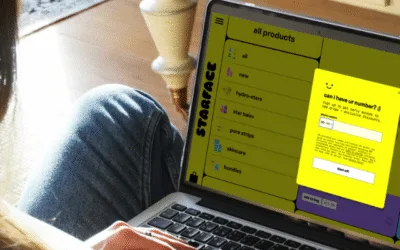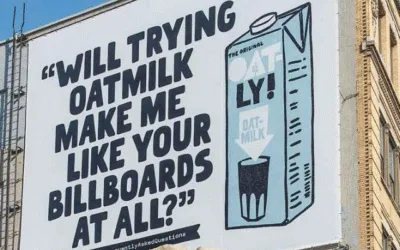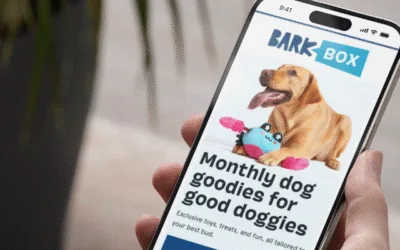The words you write matter. But so do your full stops, emojis and lowercase letters. Learn how to turn punctuation into a powerful part of your brand voice.
Steal Peachie’s clever messaging trick to make your copy resonate better
Peachies beat Pampers by selling sleep, not nappies. Learn their Ladder of Why messaging trick to make your copy resonate.
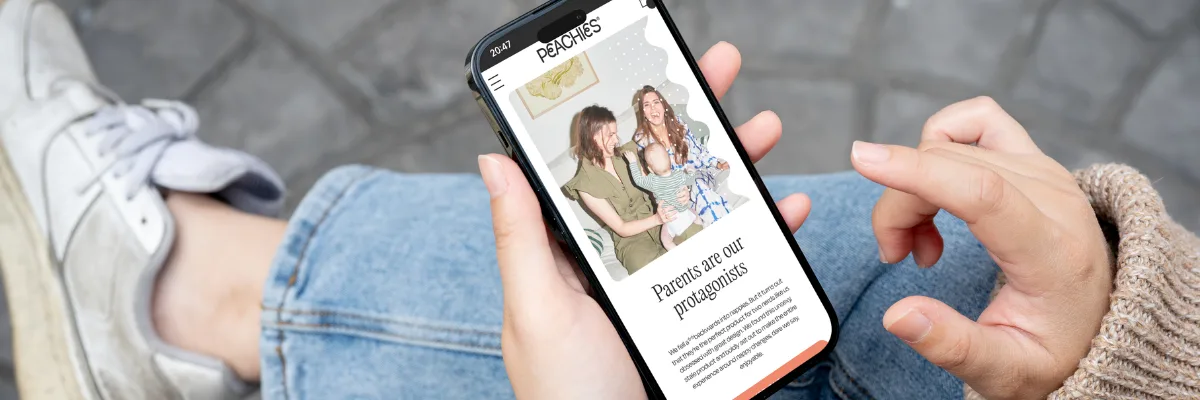
Get pro copy tips, branding tricks and e-comm insights directly to your inbox every Tuesday.
As you may know, Jack and his partner had a baby last year, so his social feeds are dominated by ads for slings, cots, Bluey merch, nappies, etc…
And one of those brands was doing something really clever with their copy that we wanted to break down for you real quick.
So let’s get into it 👇
💡 This week’s big idea: we’ve all heard benefits not features. But sometimes, your benefit isn’t benefit-y enough.
The first rule of being a copywriter is that you have to have “benefits, not features” tattooed across your chest in Helvetica.
(We’re kidding of course. We both opted for the full back portrait of David Ogilvy instead.)
In all seriousness, the problem with the old adage of sell “benefits not features” is that it only tells half the story.
Because sure, it’s absolutely true that benefits sell better than features in almost all cases…
…but it’s also true that, as a rule of thumb, it actually leads to a lot of copy that feels flat.
Let’s say we’re writing copy for noise cancelling headphones.
These headphones have a feature called “ANC Gen-4” that actively monitors the noise coming from outside and plays the opposite sound wave into your ears effectively cancelling the noise.
Now, we could say “Block all ambient noise with our ANC Gen-4 technology”.
That would be leading with a benefit and supporting with a feature. That’s smart. And data-backed.
The problem is, does the benefit really resonate with the audience? Is blocking ambient noise the real benefit? Or is it hearing your audiobook on a busy train? Or listening to your favourite music in the office, uninterrupted? Or is it being able to lock in and get shit done regardless of what’s going on around you?
You see, weak benefit statements actually undermine your copy. They read as generic and lacking in concrete details. They stop customers from imagining using the product. And they make it harder to build trust in the product.
This is where the Ladder of Why comes in.
First developed by Reynolds & Gutman in the 80s, this concept is, quite fittingly, very similar to having a conversation with a toddler, because you just keep asking why until you end up with a benefit that really resonates with your customers.
As they wrote:
Laddering… develops an understanding of how consumers translate the attributes of products into meaningful associations with respect to self.”
Reynolds & Gutman (1988).
In other words, if your first benefit statement is “Block all ambient noise with our ANC Gen-4 technology” then you ask why that matters to the customer.
Maybe it’s to stay in the zone? Then you ask why again.
Because they need to hit deadlines? Then you ask why again.
Because they can’t focus because their day is full of interruptions and context-switching.
There you go. That’s a decent benefit and pain point to speak to. Then, you write copy that speaks to that.
And that’s where the real magic happens.
Let’s show you how to make it happen for your products 👇
A full night’s sleep vs protect against leaks: how Peachies beats Pampers’ messaging by following the Ladder of Why
If you’re in the UK, you’ll know that Pampers and Huggies are the dominant players in the nappy space.
So when a challenger brand like Peachies comes in with premium pricing and a subscription model, they can’t play by the same rules.
To get people to change their behaviour, they have to speak to them in a way that motivates them to commit to a monthly nappy payment over just grabbing some nappies in their weekly shop.
That in and of itself is not a small task.
So while Pampers can afford to roll out the category-standard lines of copy like “protects against leaks” (and the occasional “poonami-proof”), Peachies has to do more.
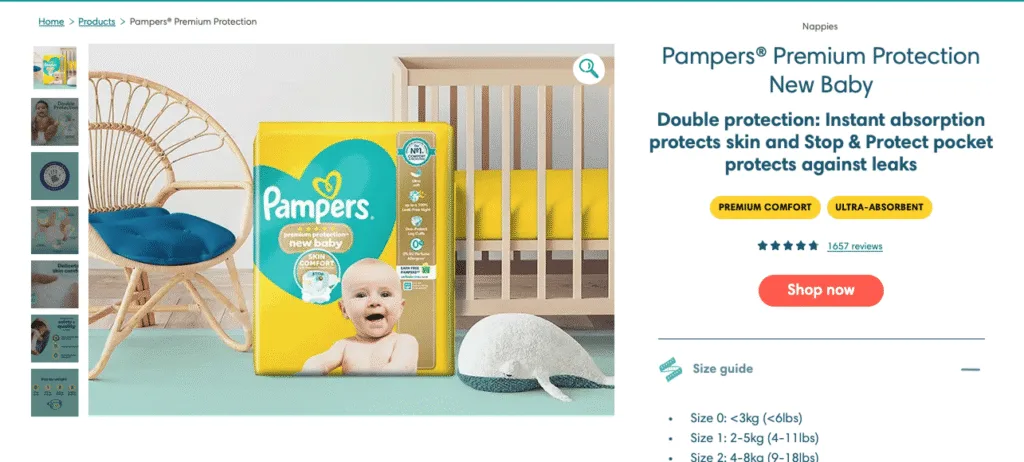
Peachies makes leak-proof nappies too.
But they don’t sell that.
They sell the next rung of the Ladder of Why… a solution to sleepless nights.
At Peachies, we obsessed over the product first. We knew sustainability couldn’t come at the compromise of performance. Because – and any parent will back us up on this — no one gives a sh*t how green your nappy is if it leaks at 2am.
We realised that the ultimate currency in the parenting world is sleep. So we built a nappy that delivers exactly that.
Rima Suppan, co-founder at Peachies in StartUp Magazine
(It’s all becoming very clear why these ads appealed to Jack now.)
Which means, at the top of the funnel, you get ads like these 👇
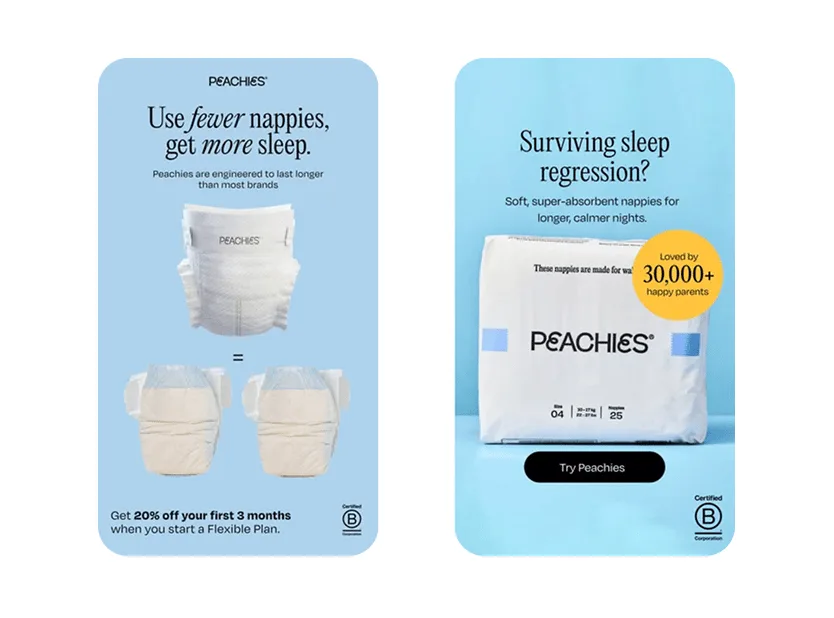
Which leads to a PDP that looks like this 👇
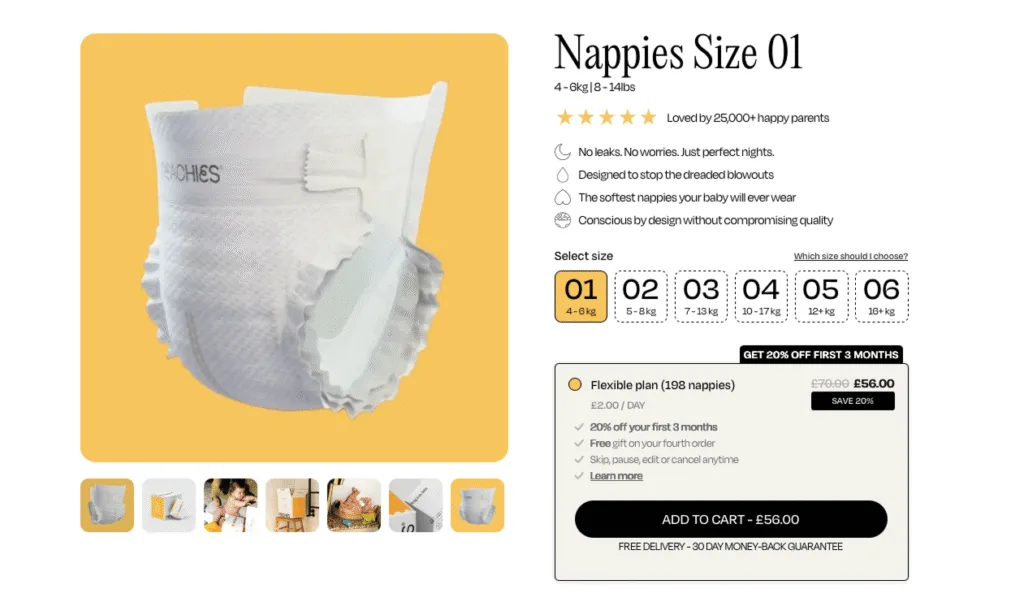
They’re not selling nappies. They’re not selling a lack of leaks. They’re selling a full night’s sleep, a calmer night… and those are the things that new parents really care about.
And that kind of messaging and insight only comes from going a few steps up the Ladder of Why.

But the copy’s cleverness doesn’t stop there.
Because, like we said, their business model is built on subscriptions. Their nappies are not an impulse purchase in the shop. They’re not an “oh, can you grab some Peachies and some formula on your way home?”
Not to mention, they’re more expensive per nappy.
And yet, they grew roughly 10X in 2024 through their subscription model.
And that doesn’t happen by accident. Here’s how they do it 👇
- They focus on the daily win, not the rare disaster. Leaks and poonamis happen every now and again. Sleep deprivation happens every night. And when Peachies are asking for a monthly subscription not a quick impulse purchase, they need messaging that makes their product feel like it’s going to have daily value.
- It uses positive framing. They could have said “no more sleepless nights” or “it’s 3am and they’ve just woken again because the nappy has leaked”. Instead, they paint a positive picture of a serene, calm night of full sleep. (And as we know, positive framing as a rule just works better.)
- It sounds premium. “Perfect nights” reads calm, competent and elegant. “Poonami” doesn’t. And while both are valid messaging strategies (Pampers Poonami ads performed really well), only one pairs naturally with B-Corp badges, awards and higher price points. All of Peachies’ copy builds that sense of quality and premiumness through the things it chooses to say (and not say). And that sense of quality helps customers justify the purchase.
(We touched on this relationship between perceived value, price point and messaging a while ago when we looked at Bold Bean Co’s copy.)
How you can put this to work for your brand
We love doing the ladder exercise when we’re first kicking around ideas to figure out a brand’s messaging.
So if you’ve ever looked at your copy and thought that maybe it doesn’t quite sell your brand’s unique value or doesn’t quite communicate its awesomeness the way you’d like, here’s how you can get a little closer 👇
Take any of your product’s features and work your way up the ladder.
Step 1: Describe the product or feature in plain English. That’s it. Don’t try to do any more here. Just give it a name, describe its attributes and you’re done. (Think a coffee bean roaster or an eco stain remover.)
Step 2: Then, ask yourself what is the immediate purpose of this feature or product? What does it do in the moment? (Think immediate things like roasts coffee beans perfectly or cleans stubborn stains, etc…)
Step 3: What does a customer get from that right away? Why does it matter to them? (Think better cups of morning coffee or less time scrubbing.)
Step 4: Now you know why it matters to the customer, zoom out a bit. How can you put this into your customers’ currency? (Peachies knew their customers measured products by how much sleep they got. What’s your customers’ currency?)
Step 5: Can you zoom out more? Can you think even bigger? Is there a way to tie this into a sense of identity and belonging?
(If not, don’t worry. The key is to end up with something real and concrete, not ridiculous and unrealistic. Selling a stock cube as “Make family dinners that go straight into the clean plate hall of fame” is good. Selling a stock cube as “Make family dinners so good your kids never want Oreos and ice cream again” is too far.)
👋 Top tip: the idea of “currency” varies depending on your category and your customers.
For food and drink brands, it’s usually about pleasure, ritual, little moments, connection with friends or fueling your day.
For hedonistic, treat-yo’self brands it’s usually about status and pleasure and self-expression and indulgence.
For utilities, it’s usually about getting time back or removing a hassle or pain point.
Our advice? Have a dig around in any voice of customer data you can get your hands on (reviews, emails, social comments…) to get a good sense of why customers are really buying.
Read between the lines and look for when customers describe how your products make them feel.
Then play into that.
But that’s all a bit abstract, so let’s make it real.
Let’s work on a brief together to nail down some early messaging concepts for a functional coffee that has supplements and mushrooms in it. It’s aimed at busy professionals, tired parents and students that need the caffeine boost but don’t want the jitters.
So, we start with the features: light roast, higher-caffeine arabica, single origin coffee, L-Theanine, ashwagandha and Lion’s Mane.
Then we ask: why these features? Because it gives our customers a smooth, tasty cup of coffee that counteract the jitters or the crash.
Why do our customers care about that? Our coffee helps customers get focus and concentration that lasts 6 hours without the trade-off of caffeine jitters.
OK, great. So why do they really care about that? What currency do they think about it in? Their currency is productivity, so this coffee is less about flavour and more about staying sharp and on their A-game from the moment their alarm goes off all the way to lunch.
OK, sweet. Is there a way to tie that into identity at all? Maybe a line like “Be a morning person. And an afternoon person. And still have energy to face the daily bedtime battle.”
☝️ Something like that that plays into productivity, a sense of pride and their ability to show up as their best self where it really matters is far more powerful than “Say goodbye to jitters” without going too far like “Get a promotion before lunch.”
And the best bit? It only takes 10 minutes or so to go from surface-level benefits to copy that’ll make customers say “Oh shit, I need that!”.
Pretty quickly, it evolves into ideas for headlines, social ads, reels, UGC… that all have a tangible, concrete benefit that feels lived in, relatable and that will resonate with customers.
(Plus, it makes the rest of your job WAAAAY easier. We 💛 a work smart not hard hack.)
👋 We’re always looking to chat to cool brands that want to do their words gooder, so if you need a hand turning your brand’s messaging from “meh” to “hell yeah!”, we’d love to chat.
Dive into more free tips and tricks 👇
Why Oatly’s brand voice is so damn good (and how yours can be, too)
We dig into the three layers of brand voice (10,000ft, 1,000ft, ground level), show how Oatly nails each one and how you can do it for your own brand.
3 bits of brilliant copywriting we’re loving right now (and why they work)
We’re opening up the swipe file to share 3 killer copy moments: a tea brand’s cheeky ad, a dog treat headline, and a humble sustainability note that oozes trust.
The weekly newsletter that takes your brand’s copy from “meh” to “hell f*cking yeah!”
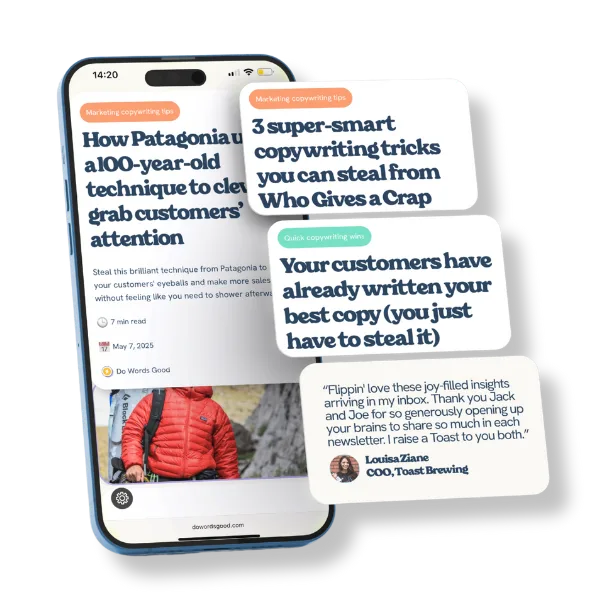
Read every week by legends at brands like these











